February 27, 2023
Censorship of a piece of writing in our ‘democratic’ communities is not as simple as someone in a position of authority deciding what can and can’t be read. It is far more complex. It may well begin with a nation or state setting laws about what is morally acceptable for publishing/reading and what is not, but after that there are many players who make choices and decisions:
1. First, the writer will choose what they want to write about – the language, the characters, the moral content, the actions. One colleague told me she is happy to write dark content for her teenage readers but she will NEVER kill a cat in her stories. 2. Sometimes, the writer’s beta readers – family, friends, trusted colleagues – will influence the content before the final manuscript is completed. 3. If the manuscript arrives at a publishing house, trusted readers employed by the publisher will have their input as to what should or should not be published. 4. The publisher’s editor (or editors) will choose what will be published and what might need to be edited/changed/removed from the original. 5. Then the publishers booksellers sometimes have influence, especially of dealing with a bookshop owner who can only stock some but not all the books being offered by the publisher. 6. The bookshop owner and staff then introduce their level of preference for which books will get shelf exposure and recommendations and which will be silently stowed on the shelf. This extends to the amount of shelf life a book receives before it is removed and replaced. 7. Then the buyer makes choices based on personal interests, moralities, and what is available and recommended. If the book is sold into schools, another raft of people are involved in the book’s ‘censorship:’ 8. The school is likely to have a book selection policy determining what is acceptable and what is not. 9. The school librarian and possibly the key leader of the English department will choose what books will be purchased for specific class study 10. The school librarian can choose to promote, display obviously, or ignore general books in the library 11. Parents will weigh into book selection based on their values and beliefs 12. Finally, students will make choices on non-class texts when they browse the library. I began a PhD in 2002 based on censorship of teenage fiction in Australia and proved through research with writers, publishers and bookshop owners (right down to not being able to complete my PhD) that censorship in Australian publishing is ‘silent’ but powerful, and based on the steps and processes listed above. Roald Dahl’s writing exists. He wrote the right material at the right time within the cultural and historical context of his time, in the same way as Shakespeare and thousands of other writers wrote tales that reflect the attitudes and issues of their times. Efforts to update, sanitise, change the original work may have good intentions – I don’t doubt that – to keep good stories alive across generations and cultural changes, but it is censorship, and it is an attempt to rewrite history to suit our own needs, and we have to be blatantly honest about doing that if we feel there is a genuine need for it. Then the cynic in me is wary of the people who want to sanitise Dahl’s works for selfish reasons:
To the point: if Dahl’s books are not to your taste, seriously, choose to read another writer. Thousands of new and fascinating stories for children are published every year, most within the current cultural context and written specifically to fit the contemporary ethical and cultural trends/tastes/changes we want to embrace. Maybe the truth is that Roald Dahl’s time has come and gone, much like Enid Blyton’s, Edith Nesbitt’s, J M Barrie’s, Erich Kastner’s popularity came and went within their times. Time and tastes might invalidate the sales popularity of a writer, but it should not invalidate the writer’s works, only highlight their cultural contexts and readers’ choices. We have multiple levels of censorship in place and thousands of current and amazing writers seeking to be read: there is no need to sanitise the past to satisfy the present.
1 Comment
February 20, 2023
As a teenager, Josie enjoyed dancing and her brothers would take her out to swing and then rock and roll dances. When her older sister, Eileen, began dating and then married a man from the Meningie area, she travelled back and forth to country dances held in the Ashville hall, and there she met John Webb. The two eventually married, settled in Meningie and had two sons.
My memories of Josie firstly revolve around Friday nights, and Saturdays and Sundays in the 1960s, when my parents would periodically visit John and Josie in Meningie to play cards and chat in the kitchen while I spent the evening or afternoons lost in the miracle of television in the lounge room (we didn’t have electricity or television on the farm until I was 12). These were the times of ‘The Flintstones’, ‘Wagon Train’, ‘Have Gun Will Travel’, ‘Maverick’, ‘Davy Crockett’, ‘World Championship Wrestling’ and ‘Roller Derby’ TV shows. Then there were Saturday nights spent spotlighting for rabbits on the farm. And lastly, in my early teens, there were football days, whenever the club I played for, Border Downs, played Meningie. Josie excelled in playing local golf, and in later years she was a good lawn bowler. There were many good years for her in Meningie after a tough childhood, but life always deals mixed cards, and she struggled when her younger son died in a tragic boating accident in Lake Albert/Coorong, and again when her husband John died. At 82, battling health complications, Josie passed. This Friday, family and friends will say farewell in a ceremony at the Meningie Bowling Club. So, novel editing this week is tinged with sadness, emphasising how important it is to savour relationships, stay in touch with family, and record life. The last time I sat with Josie, she shared her story during the time the novel covers. Much of it happened outside the scope of my mother’s life, but it’s important to know what was happening while Eileen was away from her siblings in Victoria and Tasmania, and then recuperating from TB, because it shapes her world and relationships ever so subtly. February 13, 2023What a massive difference the use of time becomes when writing is a full time option. In the space of two weeks I completed edits of three novels, a task that would normally take at least a month for each one when I was working in school!
Apart from all the common corrections re typos, grammar, spelling and so on, my editing process last week addressed, for example, issues like:
Those are samples of what I put into a ‘third’ edit process when writing. This week, when the last issues mentioned above are resolved, I will do a full read of the saga to check for any glaring issues I somehow missed. Then it’s time for beta readers. February 6, 2023One week into full time writing and the writing job is already very different. There is much to do in the coming weeks:
This first week I busied myself with two key tasks:
The online program, run by Ty Cohen and the Writers Life team, was a basic and free overview of how to approach writing for Amazon Kindle. It was highly informative, and I have several take-aways from it that I will pursue later in the year as I amass material. While it focused on several essential matters, including:
I also learned surprising aspects of the Amazon writing industry:
The online program has given me a great deal of food for thought as I move forward. The editing process reminded me how much writing is not what most people imagine. I have many colleagues and friends who tell me ‘I want to write a book’ and they have good material to write, but I suspect they see the iceberg tip of the process, which is the sitting and writing component. That part is, by far, the easiest part. It’s creative. It does require discipline – making actual focussed time to write – and the time aspect is a key reason why most people don’t write their books. But writing is not just writing. There is editing. And lots of it. And it is the part that requires significant discipline because it can be tedious. Really tedious.
The Last Wizard project is on its third edit. That means I have read the three new books in the series, in detail, three times, AFTER writing them. The writing process, at least for me, is already an editing process: choosing right words, sentence construction and variety, remembering emerging or planned facts and events, restructuring plot, punctuation. I estimated a long time ago that, with the advent of computers, most of my writing in first draft has already been significantly edited in the draft writing process because of the magic of word-processing and the ease of making changes, and that my first drafts are edited at least the equivalent of three or four times before I sit and begin a formal first edit. Editing of your own work requires major discipline primarily because:
Editors are specialists in their field, and I admire their tenacity, honesty and possibly autistic skills. I pretend to have some of their abilities, being a highly experienced English teacher, and so editing for me is a challenge and a chore. It is a core part of writing. It not the romanticised part of writing. It is the part that requires iron discipline and, frankly, even your own creative work can quickly become boring when your focus is on the grammatical conventions, the placement of punctuation and the correct meaning of words in context. Today, I move into editing the fourth book. I have coffee, cake and time to go for walks to help. It isn’t boring, but it is necessary. And I know I won’t find every possible or actual mistake. That’s why a professional does the final proofing when books go to print. And even they make mistakes. P.S. If you’ve been actively editing this post and wincing at every sentence beginning with a conjunction, I am grinning with evil intent. January 30, 2023First, an indulgence. Today is the first day in my life as a full time writer. No more squeezing desperate and sometimes frustrating moments out of the working/family/friends week to fervently create in patches of 10-45 minutes. Today I sit before my screen knowing that every working day hereafter the first priority and responsibility is to my craft. Honestly, I feel so elated, so freed, so weird! The greatest challenge, now, will be self-discipline. No more school bells making me salivate and flinch, and move to the next class or task or activity or day. No more fretting over planning and marking in the evenings and on weekends to meet assessment deadlines or satisfy the needs of colleagues or students or parents. Instead, I am my task master. I decide what I will work on and when and how. And that becomes a very different form of self-discipline – like committing to regular gym or yoga or a diet to improve health. Roald Dahl and many other writers have told us how important it is to establish routines as would be the case in any job. I am choosing to operate a working week from 9am-5pm. I have a sense of the working week daytime tasks that I must meet:
And for the first time in so many years I can keep the former set from consuming the latter. Add to that mix once-off events like workshops, conferences and conventions to reconnect and stay in contact with writing peers and associations. Oh, and nanna naps – reflection time in the afternoons
and a host of other things. Third edit is when I prepare a manuscript for beta reading. Enough. I’m also setting a time limit for writing each weekly blog. Time’s up. Time to edit. Mapping it out...Thursday, I finished the first rough draft of Harmi's Song - The Last Wizard Book 4. The editing process begins this coming week. Creating a fantasy story entails creating a rich world in which the characters can play out their lives. The original The Last Wizard (1995) was based in a pseudo-Nordic coastal environment in a village called Harbin nestled beneath Dragon Mountain. All the village culture and history aside, I created a map of Harbin to visually position events (maps below). I labelled the significant places in the final version, and in the print edition the colours were transformed to a black and white rendition. Harbin became a place. For fantasy writers, geography and an understanding of how geographical formations and features co-exist and affect each other to create a specific ecosystem of plants, birds, animals, becomes an essential tool bag of knowledge and skills when designing a place or a world. The expansion of The Last Wizard into four distinct books where the central characters are drawn by necessity and circumstance into a much larger world than their original village has necessitated more map building. The value of maps for me include:
All the while that I was deciding on my approach, I was nagged by the thought that my stories don't really need to bother with including maps, especially rudimentary ones. Places are named and described, and the stories detail distances and times spent travelling and the destinations. Readers can imagine. The maps are superfluous. It's an interesting dilemma. Are maps in fantasy novels merely an unnecessary genre trope? What do you think?
For now, I'll complete the maps for these stories this week before I begin the much more demanding task of editing. If nothing else, it's a therapeutic exercise. Fresh beginnings...It's been a long haul between the last post and this one - not just three months. Reflecting on 2022 made me realise just how nasty the year was on personal levels, although there were plenty of good things too. BUt one change is in place - I begin 2023 as a full time writer!
For the record, my lack of recent posts is due to several matters:
The current project - Harmi's Song: Book 4 of The Last Wizard series - is one chapter from draft completion and currently sitting at 89,000 words. I planned to have this one done before Christmas, but see the list above as to why it took longer. Having built toward the final confrontation between our heroes and the antagonist, I'm currently crafting how that confrontation unfolds amid an epic but fundamentally one-sided battle. Overwhelming outnumbered in a battle that doesn't make much sense to my protagonist - a dragon caught in human warfare - the antagonist is determined to 'rule the world' and ignore the rights of others - think Putin and the like - and while our dragon is keen to protect her immediate human family she struggles with the human need for power at whatever cost to other humans. I can't say more - spoiler otherwise. The Last Wizard series across four books will represent around 360,000 words of creativity when finished. The next steps are to:
One target is to increase the frequency of blog posts as personal discipline for each week of writing. There. It's in black and white. You guys can hold me to it. I will make Sunday evening the time for writing reflection each week. Happy new year. Let 2023 be a healthy, productive and satisfying year for you all. We're underway! Long live the Queen...So many individual and personal accounts of encounters with Queen Elizabeth II are emerging, so I thought I might start this blog with mine. I have been in the Queen's presence twice. Or so I always thought. But I was wrong. For my entire life, I believed the Queen made an impromptu visit to Coomandook Area School in 1963. I vividly remember our class being lined up on the bitumen bus driveway to greet the Royals who dropped in on their journey from Adelaide to Melbourne. But that never happened. Apart from absolutely no physical record of the event – and the 1963 Royal Visit schedule showing they flew from Melbourne to Adelaide, never ventured anywhere beyond Elizabeth, and sailed from Adelaide to their next port – no one else has the memory anyway. Somehow, for whatever reason, my nine-year-old self created a memory of an event that never took place. Truly strange. The second interaction with the Queen, however, was absolutely real. In 1986, Elizabeth toured Aberfoyle Park High School and we were treated to the full experience, roof snipers included. My nine-year-old self was gratified. Fantasy novels abound with royalty, queens and kings and princes and princesses. History also is clogged with royalty. It’s a strange how we humans have to be subservient to someone or something more powerful than ourselves – and even when those individuals and families are questionable in their ethics, as some have been and are, we still somehow see them as superior or different to ourselves.
And to the blog: writing has struggled to find time in recent weeks for varied reasons. However, I can report that the fourth novel in The Last Wizard series is now at 45,000 words – almost halfway through. Not much to share – spoilers mainly, so I’ll keep the progress to myself. I have an app on my phone counting down the days until I step out of a school for what I plan to be the last time as a teacher/educator. Right now, the app reads: 102 days, 22 hours, 8 minutes and 40 seconds. Wow. I am so excited at the prospect of being able to devote my energy and time specifically to writing, to chasing a personal dream that has been dangled before me since 1990 when Pan Macmillan offered my first contract. I’m also terrified that I’ve left it too late – that I was given a couple of chances before to take the leap but I chose the conservative path and missed out – and my biggest fear is that I will never publish anything again. I know, self-publishing is extremely doable, but getting a book together and actually selling lots of copies are vastly different goals and activities. I have an awful lot to learn. So, 45,000 words is good. I want to finish this draft before Christmas. I need to get cracking. Post-flu and dragonsAnother long break between blog entries – health has been challenging this year between Covid and now the flu. Nevertheless, Harmi’s Song has grown to 28,000 words, meaning it’s probably close to a third of the way in.
The more exciting news is that I submitted my official resignation letter a fortnight ago, nominating December 23 as my last official workday at Concordia College. Slightly more than three years ago, I was preparing to leave, but several issues prevented that happening, but this time there’s no going back. That will conclude twenty-three years at the one school – something I thought I would never do – and forty-five years as an educator. It doesn’t seem so long ago that I was standing in front of my first class at Stuart High School in 1978. Time. Writing from the dragon’s perspective continues to be challenging, insomuch as she is a character in her right rationalising her relationships with humans. The presence of her antagonist adds to her dilemma as to how she should or could act and why she would do what she is doing. Dragons have featured in my overall worldview across the previous three fantasy series and also in an as yet unfinished series that is waiting for me to return to. Introduced in the Andrakis Trilogy, dragons were represented as chaotic magical beasts either controlled by Dragonlords or reduced to predatory and dangerous creatures. However, sitting behind the view was emerging lore that dragons were originally large flightless forest lizards who were magically and genetically manipulated by the Dragonlords, using the latent magic from the amber Genesis Stone. By the end of the Andrakis series, the dragons are released on the world. In the Ashuak Chronicles, set a millennium after the Andrakis tale, the dragons have achieved self-actualisation through the power of the amber stones and are plotting to establish their rule, using the Ashuak priests as their pawns (the humans think they control the dragons), but their plans are thwarted when they are portalled away from the Andrakis/Ashuak regions. Hence, in the Dreaming in Amber books, dragons do not appear as that tale is set in the regions from which dragons were banished. Meg and A Ahmud Ki face the remnants of a far more ancient power – the Demon Horsemen; ghosts of the Dragonlords. For The Last Wizard series, set in time between Ashuak and Amber periods, the fate of some dragons that survived the Andrakis era is revealed in that they form bonds with wizards, much as the Ashuak priests tried to initiate in a different part of the world. But the wizards and dragons’ united power is feared by humans who ruthlessly hunt them down and kill them, leaving, it seemed, only Eric and Claryssa as the sole surviving dragon and wizard pair. Tam, however, inherits Eric and Claryssa’s dragon egg and ultimately their power and the series grows from there. The missing link is the unfinished series – loosely labelled as the Dragon Queen series for now: it will need a different title – where the fate of the dragons portalled out of Ashua is revealed as they seek revenge. Back to the writing – Do dragons dream of limitless gold...
In other news, artist and friend Kirsi Salonen has forwarded the third cover for the series and again it is stunning work. She captures the spirit and the characters wonderfully in this cover art and I am indebted to her for taking the time and care to create the images so masterfully.
I also joined an online inspirational group of writers who spur each other on with writing each week. Tagged as The Ministry for Reformation (nice title, Lee), we share our progress – highs and lows – to remind each other that we are writers, and that writing doesn’t mean factory-line productivity either. Oh, rose, thou art sick...Covid. Seven days isolation, last week of school. I did what I could to stay in contact with my Year 12s, but otherwise it was sleep, cough, sleep, eat lightly. Meg copped her infection from me three days in. House locked down. Friends and family delivering food. On day nine, I stepped back into the world, cautiously and masked, because I still had a cough and mucky throat. And then the next round – mouth and throat ulcers – an old enemy. Back inside, sleep, wake, no eating. Anything in the mouth or throat, apart from water, like razor blades. Seven more days pass until now. I’ve lost another month. Hello blog. I’ve missed you.
All of the above slowed, but didn’t stop, writing. In the past five days, the new project, Harmi’s Song, has grown to 8,000 words – not a lot, but at least a little progress. The main parts of the opening three chapters, possibly four, are sketched and some parts coloured in. I thought I would have more to share and discuss, but not so – just a little. Ajin will become an integral character in his tale. I’ve drafted his first encounter with Harmi, Tam and Jaysin, where he hints that Jaysin’s reputation/existence has been eradicated from Kermakk lore and that there is a sizable bounty for anyone who can locate the wizard (TAM) and dragon (Harmi). Now working out where the encounter leads. Not much. Sorry. Back to sleep for a while. Later, today, I hope to pick up on the tale. Take care, people. It keeps changing, over and over...And still the new world order morphs faster than I can write! Floods devastate the Australian east coast forcing thousands into homelessness and debt, Russians invade Ukraine forcing millions into homelessness, the cost of living escalates as quickly as the price of petrol and the greed of real estate people, forcing people on low incomes closer to the poverty line, two elections loom – one at State, the other Federal, and both will determine the directions of economics, climate change and how protected the rich remain, a new strain of Covid emerges in the communities and my school starts struggling under the impact of absent teachers and students forced into recovery isolation, and this week I’m a daily RAT test participant to show up for work.
On the flipside, the Adelaide Feast, Fringe, Festival and WOMAD events have run their courses, we helped a good friend celebrate marriage to his beautiful partner, my daughters on the east coast are at least safe from the floods (although one was directly affected), and my Year 12 English students have finished their second assessment task. My stepdaughter is reading The Last Wizard for the first time and says she can’t put it down. That kind of compliment always feels good. I started one new young adult project last week and wrote 1500 words in three sittings, but I put it on ‘pause’ to think through where it will go and my central character’s ‘fate’. The piece has an early twist in the opening chapter that I’m trying to carefully craft. I’ll reveal more on that project’s crafting as it emerges. I also returned to the fourth book in The Last Wizard series, Harmi’s Song, and that has reached 2000 words. The aim today is to finish the opening chapter and start the second, giving the project impetus. The challenge with Harmi’s Song is in developing a character who has immense power but whose head is filled with the voices of multiple past generations of dragons, each generation with conflicting views about the place of dragons in the world and their relationship with humans. The story will evolve around Harmi’s loyalty to the three humans who protected her and her legacy, especially Tam with whom she shares an immutable and direct bond, and darker forces driving her to exact revenge on the purveyors of a cruel past. All four The Last Wizard novels open from the perspective of a character who is not the story’s protagonist. Tamesan’s Song opens with the Harbin dragonwarrior sentry Chasse’s Song with Chasse’s father, and Jaysin’s Song with the Machutzkan watchtower sentry. For the sake of interest, here’s the opening to Harmi’s Song (as yet unedited and without indents): “Immersed in the tang of ocean, salt and fish, Ajin alighted from the skiff onto the rickety jetty, and surveyed the village bearing the name Apakin Sha. Bemused by the ramshackle collection of wood, stone and thatch buildings, he wondered if his decision to sail so far north into the icy reaches was necessary or wise. ‘Your bag and caruta,’ a rustic sea voice growled beside him. A bow-shouldered, red bearded man with a thick dark grey tunic and brown leggings held a red leather bag and a stringed instrument. ‘Thank you,’ Ajin replied, taking the bag and caruta from the sailor. The man raised his hand, palm expectant. Ajin lowered his bag and fished inside his baggy pants to extract a silver coin, which he placed in the grubby palm, but the sailor’s expression remained unsatisfied as he closed his fist and turned to climb into the skiff. ‘You’re welcome,’ Ajin muttered to the sailor’s back, and he bent to collect his bag. The ship’s captain assured him before the journey that if he wanted to disappear from the world there was no better place to do so than Apakin Sha. ‘Arsehole of the world,’ the captain told him. ‘Sealers, whalers, prospectors, people like you, and a bunch of old people with nowhere to go and no means to get there.’ ‘Why do you sail there?’ Ajin asked, eyebrow raised. ‘Sealers and whalers and prospectors got to ship out their skins and ore and ship in their supplies,’ the captain explained with a broad grin. ‘Profitable for them, very profitable for me.’ ‘And you’re sure the Empire doesn’t reach that far north?’ Ajin asked. ‘I doubt the Karudar Marfek has even heard of Apakin Sha,’ the captain replied. ‘Traders along the west coast take in the skins and ore I ship south and make their profits and pay their taxes, and I’m certain they also take the credit for the supply. Apakin Sha doesn’t exist.’ Ajin traversed the jetty, cautiously testing planks that looked suspiciously loose or rotten, and stepped onto the pebbly beach. Several fishermen were repairing nets and boats, and a trader hefted furs onto a trolley from his wagon, but nobody greeted Ajin as he strode up the street, although he noticed surreptitious glances in his direction from men and women when he passed, and two children ran inside a hut as he approached. Spotting the sign for the inn, he veered toward it and stopped outside to look back along the street to the bay. Two ships lay at anchor, the three-masted Ice Maiden on which he arrived, and a smaller two-masted vessel, probably a whaling ship. Grey clouds veiled the sky. He gazed up at the cloud enshrouded mountains towering above the village and an icy breeze touched his cheeks and nose. This will be an interesting place, he mused. A shadow moved through the clouds, vanishing as he witnessed the anomaly, and he squinted, blinked and stared, disbelieving what he thought he saw. ‘Can I help?’ a woman asked. Ajin lowered his gaze. Plump-faced, hair wrapped in a dark blue shawl, features weathered by life, gap-toothed, with a plain, unwelcoming expression, the woman stared, awaiting his answer. ‘Need a room,’ he said. ‘For how long?’ the woman asked. ‘I don’t know,’ Ajin replied. ‘I can pay. I can also provide entertainment.’ He lifted his caruta. ‘You’ll need food as well, I gather,’ the woman said. Ajin nodded. ‘Follow me,’ she ordered. As he entered the low-ceilinged inn, Ajin shook his head, his thoughts troubled by the fleeting vision in the clouds. He could play and sing all the popular ballads, but he also knew many of the old ones, and he knew what a dragon was.” So, that’s a taste of the new project. Next entry, I’ll have more to discuss. Deep breath and reflect...Over a month flies by in an instant! The COVID staggered back-to-school strategy certainly altered the workplace landscape dramatically for the areas I manage – ICT and Libraries – creating almost a duplicate start to school separated by a less than a fortnight, along with keeping an entire community of students ELC-12, teachers and parents connected online and in the classrooms. But my teams met the challenge and, providing there’s no dramatic shift in COVID matters, we’re all back on site and slowly easing restrictions. Of course, we can’t complain at all, in comparison to what has been the impact of the pandemic interstate and overseas. And now we have the Russian idiocy exploding into Ukraine and threatening everyone with nuclear devastation if anyone interferes.
While writing has retreated into the background for the past weeks, apart from some editing, this morning allowed time to reflect on what has happened since I started this blog way back in December 2018. Originally intending to record the process for drafting a historical semi-fictional biography of my mother’s life from 13-21, the blog has continued to encompass subsequent projects. In the three years I have managed to draft to readiness three novels – the historical fiction, Girlie, and two teenage fantasy pieces, extensions of original The Last Wizard. They join three existing novel drafts – one apocalyptic zombie novel, All We Have, a fantasy novel, Rising Storm, (and a half of the second in what is currently labelled The Dragon Queen series), and a young adult novel, Shadows – that I’m hoping to finish working on in the next eighteen months. So, despite work and COVID, a lot of writing is done – but nothing published yet. Life plans were to quit work at the beginning of 2019 to pursue all of the above. That has become 2023. This time it is set in concrete. I’ve made it widely and publicly known at work. I’ll be 67. The mortgage is paid. It’s time. As for the writing, also this morning I penned the plots and notes to three new teenage/young adult projects and I’m excited by the stories they will tell. I’ll write the openings to two of them after this blog entry. Two weeks ago, I wrote the opening chapter to the fourth book in The Last Wizard series – Harmi’s Song – continuing the tale, this time, from the dragon’s perspective. Yes, that means I will have five project drafts on the go. I will settle into one next week as the key focus, but I can’t wait for 2023 and the opportunity to be a fulltime, broke but keen writer. I had a break from education way back in 1993 and wrote the original The Last Wizard and Joy Ride in that period – two novels from concept to full draft in six months – so I know what is possible. I have ten months remaining of what will be a forty-four-year education career. Already I’m ticking boxes, saying quietly, ‘I never have to do that again.’ I have love education – I really do. I only wish I made an impact on the bigger picture for the benefit of teachers and students, but I was never able to take the right pathways to fight the ignorant politicians and people who insist the education experience can only be the same as it was for them – exams, industrial labelling, grading and leveling practices, cruelty to children, distaste and disrespect for teachers – to consign those people to history. The next generation will have to win that war. Now for a coffee and then the openings to the new projects. The more we change, the more we stay the same.2022. Wow. Here it is. This year we enjoy Soylent Green as a food option. Christmas 2021 is done. New Year 2022 is done. Covid, social media fake news, the conspiracists, right and left wing extremists and inept government continue to disrupt the average life (whatever that is). The draft apocalyptic novel sitting on my device from 2018 looks less and less like a novel and more like a documentary. I will get back to it later this year, especially as life has provided better research than I previously completed for the novel. The past three weeks were laborious from a writer’s perspective: editing, editing, editing. Back in the October 2021 post I mentioned some of the editing matters I continue to address – especially overused words. I also worked through the degree of adjectival and adverbial description, replacing or eliminating unnecessary ‘ly’ words. In a simple example it means taking a statement like ‘moves quietly’ and replacing it with ‘crept.’ Another simple example is changing ‘passionately cried’ to ‘howled’ or similar, choosing single words that as equally or even better describe the action. It’s not a ‘one-size-fits-all’ approach – variety in writing is essential, but it makes me focus on possibilities with expression. Another editorial matter is ensuring a sense of time and place – season, weather, physical world – is evident throughout the story. This involves exploring where smell, touch/texture, temperature and so on can be effectively included. Jaysin’s travelling aboard ships opens the maritime experience – salty and fish smells, the creaking of wooden planks and spars, the pungent stench of tar and sweat. The visceral effect of snow and rain and heat and dust can be included to enhance the reader’s experience. Marketplace sounds – rattling tins, shuffling feet, ox dung, spices – can be added to bring places alive. This is the current process for the drafts of The Last Wizard series.
sales sit, and I feel as if teachers are the forgotten warriors during the pandemic. I’ll do the little I can do to help them remain amazing people who continue to build the community and our future through our children.
For now, it’s Sunday – back to editing while I have the chance. It's beginning to feel a lot like...Life in South Australia is topsy-turvy since the border opening and the vaccination and testing regime ramped up. In a world of lockdowns and closures, I am fortunate to have a job that was uninterrupted by the events – and a job that escalated in pressure each time schools moved to online learning. The school year rushed to a frantic conclusion and today I start a holiday break long sought since the 2020 outbreak.
So, to the writing. The Girlie manuscript is with a publisher awaiting a decision. I have my fingers well and truly crossed. I am currently editing the two new drafts for The Last Wizard series – Chasses’ Song and Jaysin’s Song – with the aim of making a first approach for the project to a publisher late January. This will require transferring the physical manuscript edits onto the digital copies hopefully by New Year, and then writing three detailed synopses and a cover letter in early January, a task alone that will consume significant hours. Now I am churning through ideas for the fourth The Last Wizard book, Harmi’s Song, which is the dragon’s story as Tam, Chasse, Jaysin and Harmi are called to face the threat of the Kermakk Empire that is determined to hunt and kill the last dragon and wizard. I am unsure as to when I will start this project – although it is already nudging me to begin. I have also completed a draft edit and update of the novel In My Father’s Shadow, written a synopsis for it, pulled it from the Amazon store (it was never promoted and sold maybe five copies to family), will retitle it (the first title is an echo of far too many other works), write a cover letter and see if a publisher will consider publishing it. Recent beta readers have told me it is one of my better works with the exploration of a young man’s coming of age as he unravels a family secret and his father’s terminal illness covering currently important topics around sexuality, faith, identity and love, so I really don’t want it to languish as an unknown and basically inaccessible novel. Like The Last Wizard project, I will make the first approach to a prospective publisher with this novel late January. And I am trying to work out how to reconnect with the writing world in general. I am planning on submitting different short stories to various magazines in 2022. I have about twenty existing short stories to draw on. While Robert Stephenson published five for me in different issues of his Altair magazine, and Paul Collins published two others in anthologies, I have many more that have never been shared, so a new challenge for me is to start submitting stories. That’s the update. I promise to make the next entry in January more informative about techniques and approaches and thinking. I’m pretty excited about where the work over the past four years has gone. This entry is just to say I’m working on stuff. Merry Christmas to anyone who reads this. I hope you are all safe and can spend time with family and loved ones. This mortal round...You may not have heard of Russell Ebert. He was a South Australian football star and icon, and an integral part of my teen years when I was learning to play the game. As a centre player, I wanted to emulate his style, his ability to read the play and break the lines, his sportsmanship and general demeanour. He died this week, aged 72. Lots of my teenage icons have died in recent years, as have friends and colleagues. I am 67 next year. Mortality walks close beside me and I’m increasingly aware of its presence. Family history is an imperfect jigsaw puzzle of oral anecdotes, photographs, documents and experiences, full of facts and interpretations, inaccuracies and aphorisms, realities and dreams. I was inspired to write Girlie because of the snippets and tales my mother shared about growing up in the war years with hints of romances and scandals of broken hearts and adventures. When the inspiration became a serious intent on my part, very conscious that if I didn’t capture the stories my mother’s mortality would intervene, I interviewed her over the course of a year, sitting with her in the War Memorial Home on Wednesday afternoons (weekends were for shopping and lunches), asking questions and typing notes, gathering a sense of the identity of the girl and woman who morphed into my mother. Of course, she shied away from intimacies and secrets as she unfolded certain aspects of her teenage years, blushing and giggling sometimes at her admissions, which showed me the sixteen-year-old girl was still running around inside the eighty-year-old woman, so I was left, when I started plotting the novel, with gaps to fill, and deductions to make. Some of the unexpressed secrets became very obvious as the pieces were laid out of the jigsaw. For example, she left Adelaide to go to Melbourne – in itself, not overly unusual – although when you know the side stories (family pressures, a cheating lover – especially the cheating lover, her reasons for leaving become clearer. She would cheekily chastise me for being nosey when I asked her for the truth behind some of her choices and decisions, and then she would laugh when I told her I’d have to ‘make up’ the gaps when I wrote the story, almost taunting me to do so. We had some good times. The novel is now finished because I ‘found’ the missing pieces – although they were not difficult in every case to find when the puzzle, as a whole picture, lay on the table. Whether I’ve been successful in laying out the overall picture will be the readers’ judgement. I have to modestly say I like what I see. I see the young woman who was my mother, and she is truly a beautiful, naïve human of her time. Now the work is finished, I have a very different dilemma. The novel is, after all, part biography, part fiction. Many background or supporting characters are not real, although people like them were. But the main characters carry real names of real people, living and not. Many of the depicted events happened; at least they happened in the way my mother said she remembered, but we know memory is often only our interpretation of what we believe happened. My mother’s memories, therefore, will not be everyone else’s truth. And many of the events most likely never happened because they are the gaps, the ‘missing jigsaw pieces’ I’ve had to make to complete the picture. That means real people might read this and say what is written is lies. And that could also be true. Part fact, part fiction. My dilemma. Part of the plan, when I started the project, knowing it would always be an ‘interpretative memory’ of the lives of many people, was to write the draft using real names and then substitute the real names in the final edit with alternatives to mask the reality. For example, while my parents’ patriarchal family names are Eileen Bonney (Mum) and Bill Shillitoe (Dad), it would be easy to substitute the names with the matriarchal line: Eileen Stephens (Mum) and Bill Green (Dad). There are many advantages to doing this. In particular, while the novel could then be ‘marketed’ as ‘based on a real story’, it would remain essentially historical romance fiction and not be seen as a biography. It would also effectively dissociate me, as author, from the characters as my parents, even though family members and close friends know the truth. I don’t know. I will know in the next week or two, when I look to approach publishers. Maybe I already know because I have always leaned toward changing the real names anyway.
A three-year writing project is done (pending the last decision above). I’ve not published with a publisher for more than a decade and the publishing world I knew is long gone. I start from scratch, even down to writing the pitch email. Any recommendations of potential publishers from out there will be gratefully considered. Vale Russell. Thank you for being a sporting role model, on and off the field. And thank you for reminding me to put my priorities in order this week. Flicking between projects...With The Last Wizard project now at three completed manuscripts, and editing and beta reading underway, I returned to visualising the region in the expanding world for Tam, Chasse, Jaysin and Harmi. The original Harbin maps will come from the first novel, but Chasse’s Song draws the party into the mountains beyond Harbin and Dragon Mountain, and Jaysin’s Song widens into the expanse of the Kermakk Empire. I’ve sketched the regions and will insert names and details later this week, but thought I’d share the initial raw maps. Beta readers have provided good feedback on flaws in Jaysin’s Song and I will commence the next edit of that manuscript in a couple of weeks. In the interim, I’m running yet another edit across the Girlie manuscript, tightening language and double-checking ‘factual’ information in the historical backdrop of the novel. The Girlie project started late 2018 and was finished as a raw draft in 2019, so it’s interesting reading a piece that is now technically two years old since I completed the draft manuscript. The time distance is allowing me to read it with refreshed eyes and spotting stylistic aspects I do need to adjust. I was originally planning to start chasing publishers for this project last year, but I wasn’t totally happy with it and held it back – and then The Last Wizard project jumped to the forefront – so now the plan is to start inquiring at the close of this year.
The fourth The Last Wizard, Harmi’s Song, I’m hoping to commence by Christmas time. Writing from the dragon’s perspective will be a fascinating challenge. That’s all I have this week. Three to edit: one to bind them all...Everything seems to be revolving around fortnights of late. The past fortnight has been very productive, however, partly with the school holiday break being on offer.
Editing. Like, seriously, who would want to do it as a fulltime job? Oh. Wait. I spent 40 years as an English teacher. I’ll park that comment for another time. I spent the past few days editing and also reorganising the three books now completed in the Last Wizard series into basic manuscript layout – font style and size (Calibri 11, double-space, 5cm margins etc – which turned into a bigger chore than I imagined when I realised that I’d been drafting using a template that corrupted the tab spaces. So, I manually replaced all the tab returns throughout 700 pages!!! Grrr. Anyway, the editing process is underway. First raw edit is completed. For the record, much of it has been dealing with the following personal foibles: reducing the frequency of overused words, for example ‘said’, ‘turned’, ‘saw/looked’, approached, and reducing unnecessary verbosity/description. I’ve also read through all three texts to ensure any foreshadowing, personal traumas, promised actions are either followed up or at least explained away by characters. Another challenge is working through to eliminate passive writing eg ‘She had done’ becomes ‘She did’. It’s mainly finding past tense words like ‘had’ and ‘haven’t’ and testing their validity in the sentences. The editing process is really just starting, despite my observation in the previous blog. I’m envisaging the process will consume my writing time for the next month before I suspect I’ll be sitting here writing I’m starting to look for a publisher. But it is very nice to have three manuscripts lying on my table awaiting the next round of editing. It feels real. A new child...Done. Gestation period, nine months. I wrote the final sentence to the first full draft of Jaysin’s Song today: 108,000 words. That’s the easy part finished. Now I begin the first full edit.
The last month of this project, representing probably around 10,000 words of writing, has proven difficult, moreso because it demanded time to read back over parts of the growing manuscript and reference further back to the previous two books leading to this one. I mentioned that part of the editing process about to commence will be ensuring consistency of all aspects of the story across all three books now. Reaching a conclusion in the third book forced me to do more work on the consistency and linking process than I planned to do, but I should have expected it because this will be the fourth fantasy series I’ve written, and every series demands the care in ensuring characters and places and languages retain accuracy across the series. But, for now, the first draft exists, and I’m satisfied. The editing begins almost immediately – well, maybe in a couple of days. Apart from factual consistency and spelling and grammar, what will I be looking for? The far from exhaustive list includes:
I’m laughing, reading the above, because it makes me want to walk away and not do the hard work ahead, but that’s the key part of moving writing from a creative escape exercise into a crafting process, taking the detailed palette sketch and refining it to move it toward a full painting – 10% inspiration, 90% perspiration. Once the first raw edit is done, it will be on to some trusted beta readers who will let me know what extra editing and work is required. Okay. I have work today. "We are such stuff as dreams are made on:"Last night I woke from an incredibly sad dream, about loss and loneliness. I’ll spare you the depressive details, but the impact of dreams in our lives for me has to translate into the lives and experiences of characters whose stories I tell. In fact, I insert dreams in stories to give readers greater insight into the subconscious matters affecting and influencing characters for deeper understanding of those characters.
In the current project, Jaysin is challenged on several matters as the story draws to a conclusion. He wants power and identity. He wants to become his ‘best self’, to stand apart and be recognised for who he can be. He feels his siblings overshadow him and hold him back, while his new mentor offers him opportunities to grow. But there is a double cost involved. First, there are ethical dilemmas for Jaysin in serving the Empire – the determined will of the rulers to subjugate those who do not want to be ruled. The parallels with protest marchers over COVID restrictions is a prime current example of how the ruling class have to use ‘force’ to keep the population safe against a population that believes it is being oppressed by the ruling class. Who is morally right? Is there any ‘right’ in the clash? In order to stay with his mentor and grow in his magical prowess, Jaysin must be willing to become involved in politics and social order imposed by the Imperial laws and leaders, and that means dealing harshly with ordinary people who fight for their version of freedom. In almost every scenario in life, choosing to follow a mentor means changing your perspective of the world and human behaviours. When I was mentored to become a better teacher, I had to alter my perspective of the classroom, my practices, and my understanding of the nature of what teachers and students are in that environment. When my volleyball mentor set a goal for our team to enter National competitions, I had to change my perspective of what playing a game meant and my practices to be a better contributor in a team role. To become something different, you cannot remain the same. Second, to accept his mentor and the law of the Empire, Jaysin must become increasingly estranged from his family. This is partly a physical separation – Tam and Chasse are hiding in the western mountains, Jaysin is in the Imperial capital. It is partly a political separation – Jaysin must choose between serving the Empire or rebelling against it, and his family are outlaws by default. It is also partly an emotional separation because they are family and the siblings struggled together to survive the collapse of their home village and loss of its culture. Jaysin was nurtured into beginning his journey into magic by Tamesan, and he admires his brother’s physical prowess even though he, personally, was never destined to become a Harbin dragonwarrior. To draw Jaysin away from his family, his mentor offers growth in magical knowledge and power. She offers comfort and status. She offers a broader understanding of the wider world – at least from her point of view. Every day, worldwide, people leave families behind to pursue careers and passions – children leaving parents, spouses leaving partners and families. We must acknowledge and remember and reflect upon the fact that some of the most revered and successful individuals in human history only achieved success by severing ties with family or abandoning family to chase their dreams. And so to dreams. The complex psychology that makes us dream of the things deeply concerning us – sense of loss, abandonment, injustice, confusion, loneliness, fear, frustration and anger – is a valuable vehicle in opening and explaining characters in stories. In itself, a creative story is a form of dreaming because it allows readers to journey with characters and share their experiences and wake from the end perhaps wiser or more confused, but awake nevertheless. Revealing character’s dreams reveals the character’s deepest struggles that cannot be easily revealed in waking action and interaction. Jaysin’s Song is at 90,000 words – just over – with approximately four chapters to write. Today, having finished this blog, I enter one of Jaysin’s dreams to start a new chapter. The Source of MagicJaysin’s Song is at 80,000 words – roughly with nine chapters remaining to write. I can see the end – it’s just within my grasp, though I’m not entirely sure what it will look like when I reach it. So, let’s talk a little about magic.
I have, from the outset, way back in 1990 when Guardians was barely ten chapters in draft and a concept proposal on its way to Roxarne Burns at Pan MacMillan, wrestled with the ‘science’ of the magic that would permeate my fantasy novels. I was caught between magic emerging from certain beings understanding and manipulating the auras and energies at the core of all things, and an alien intervention – a source of magic that falls from the stars. In the end I combined both, allowing a character I named A Ahmud Ki to explore and become adept at what were called the five Kis – each school of magic understood, and misunderstood, by some but not by others. The oldest form of magic was born from the Elvenaar and the Aelendyell who learned how to manipulate the energies residual in all matter. To warm a rock, the secret was to learn the phrases that would cause the rock to resonate, its energy being released as warmth. To that, they added the ability to affect and control the mind, allowing illusion and similar magic to be applied. But then I introduced to the world history of my works a cataclysmic event – a meteor shower that brought with it the alien magic of amber – not amber as we know it, but a material that could amplify the energies and illusions of the older magic and make it many times more powerful. In the Andrakis trilogy, the power of amber is mentioned, but not truly understood by all. However, in the Ashuak Chronicles, amber is recognised as the conduit for and source of powerful magic, and by the Dreaming in Amber quatrology it is understood for what it is. The Last Wizard novels slowly embrace the amber and energy magics because they are set in a separate part of the same world as Andrakis, Ashua and Amber, though at a different time. The Herbal Man and his dragon companion, Claryssa, from the first book, were survivors of a past age when wizards and dragons made their powerful but flawed pact and infused their beings with the amber in the same way as dragons were infused with it millennia before by the Elvenaar. Tam inherits this ancient legacy through her union with the dragon, Harmi. I will unfold the dragon evolution in another blog because it is the background of the fourth (unwritten) book in The Last Wizard series. The Last Wizard novels are ‘coming of age’ tales for the four characters – Tamesan, Chasse, Jaysin and Harmi the dragon – and the Harbin community from which they originate had little understanding of the wider world beyond the mountains and the ocean surrounding it. Each book takes our characters further and deeper into a world where politics and social fabrics are increasingly more complex and fraught. So it is with the magic that they discover, especially Jaysin. The section I’m writing now in Jaysin’s Song has Jaysin stumbling upon the oldest forms of magic from the Elvenaar and Aelendyell, the ones who eventually transformed large forest lizards into dragons using the alien amber and became the Dragonlords. I write in circles along a background and history planned thirty years ago. It’s fun. Beginnings...Starting a new chapter today reminded me of the constant challenge of beginnings. In a universe far, far away, when I taught classes at TAFE, WEA and SA Writers, I would work with writers on beginnings, using examples of famous novel openings like the following:
“It was a wrong number that started it, the telephone ringing three times in the dead of night, and the voice on the other end asking for someone he was not.” – Paul Auster, City of Glass “Call me Ishmael.” – Herman Melville, Moby-Dick “Once upon a time, there was a woman who discovered she had turned into the wrong person.” – Anne Tyler, Back When We Were Grownups “You better not never tell nobody but God.” – Alice Walker, The Color Purple “It was a bright cold day in April, and the clocks were striking thirteen.” – George Orwell, 1984 “Mother died today.” – Albert Camus, The Stranger “At night I would lie in bed and watch the show, how bees squeezed through the cracks of my bedroom wall and flew circles around the room, making that propeller sound, a high-pitched zzzzzz that hummed along my skin.” – Sue Monk Kidd, The Secret Life Of Bees “All this happened, more or less.” – Kurt Vonnegut, Slaughterhouse-Five “Someone was looking at me, a disturbing sensation if you’re dead.” – Laura Whitcomb, A Certain Slant of Light So, openings to novels and chapters, for me, must have something for the reader, something enticing, informative, mood creative. Out of curiosity, today I went back over the three manuscripts in this series and grabbed the existing opening lines to compare: “Marc rubbed his thick stubble, his fingers tracing the long white scar running from his left eye to his collarbone.” – Tamesan’s Song “Kevan limped onto the jetty, scars pulling against his skin, reminding him the past was close.” – Chasse’s Song “Masha saw the shape appear against the white peak of Jenjaka Mountain and rose from his chair, his knees complaining at being made to move.” – Jaysin’s Song The openings are deliberately designed to link the writing style and mirror similar content. All three men are watching, anticipating arrivals or changes. There are references to scars and arthritic or damaged knees, perhaps to suggest worlds with a history or trouble or war. All three characters are not central characters (Marc and Masha are very minor players in the stories). Each suggests a world in motion, one where the characters are living before the reader arrives. The sentences/paragraph that follow each opening line establish time, place and mood. I also thought it would be interesting to grab the unedited opening lines to the last four chapters I’ve written in the current project to see what I’m doing: “‘We are foreigners and women,’ Laseen reminded Jaysin.” “Jaysin trailed in the wake of the black garbed Karudarteta along a wide corridor that penetrated deeper into the Imperial Palace.” “He focused, whispering the phrase Tam taught him.” “Two black robed servants and eight Kermakk soldiers marched across the dock toward the barge in the dawn light and crisp air.” Each opening line leads the reader into the events taking place. In the first, as Jaysin prepares to use a disguise to reach the leader of the Kermakk Empire he is reminded of the oppression of women and strangers. In the second, he is being led into a sacred unknown. The third is a reminder of his magical skill and capacity to learn. The fourth sets a situation that is to unfold in the chapter. Yes, all four will be edited and change by the time the project is done. Although not strictly true for every opening I create, I like to take the reader directly into action, an event, a conversation so the reader is immersed and wants to know what is happening or will happen as a result. Where appropriate or useful, the chapter opening will offer connections with events in the previous chapter, as does each example from Jaysin’s Song. Story openings and chapters are reader hooks and connectors. If effective, they keep the reader engaged and/or remind them of what has happened so far and hint at what might happen next. They can establish action, plot, character, mood and setting succinctly. The project is now at 73,000 words – almost three-quarters done. I was aiming at 10,000 words of writing or more this week, and made 8,000, but it’s a fortnight filled with family birthdays, so maybe I was being overly ambitious. Either way, it’s been a good week. What's your preference?Today is always my Dad’s birthday. It feels strange to remember it is now thirty-one years since he passed. The older I get, the more I wish I was able to have the chats an adult me could have had with Dad. In all honesty, I never knew him enough to know how he felt about growing up, or the changes in himself and in the world he lived through. That saddens me.
Jaysin’s Song hit 65,000 words this past week and I’m facing a week off work which might allow me to add more words than usual. Over the last fortnight, I’ve wrestled with plot and character. Jaysin has offered himself in exchange for his brother Chasse’s freedom. Of course, he intends to escape as soon as he knows his brother is safe, but the story demands he remains in the Kermakk Empire where he grows in stature and ability as a sorcerer, so it has been an interesting exercise to determine how to ‘lure’ him to stay. In response, I’ve created a mentor, a person who can show him how to become more powerful and able than he currently is, someone a lot like himself. Determining character sexuality is, in itself, always a fascinating process in writing. Although I have mapped Jaysin’s sexuality, along with his siblings and other characters, it becomes interesting when sexuality forms a part of understanding characters and their relationships and motivations. Tam, in Tamesan’s Song, is portrayed as heterosexual, given the interest the male characters have in her, and her own responses to events. However, as we learn by the story’s end, and definitely into the second book, Tam’s life is intertwined with Harmi the dragon, and she has no portrayed desire to seek a human partner, leaving her sexuality either subsumed entirely by her commitment to Harmi, or dormant, or asexual. Her story begins with her aged fifteen, on the cusp of being chosen as a wife in the Harbin community. By Book Three, she is twenty, but in a very different relationship with Harmi and Book Four (not yet started), Harmi’s Song, will reveal more of this aspect of her character. Chasse is developed as a sixteen-year-old heterosexual male in book one and during Book Two – Chasse’s Song – he establishes an unrequited romantic relationship with Banni, a widowed village woman. In Jaysin’s Song, at age twenty-one, he is betrothed to a fellow and female warrior, but since his enslavement as a prisoner that relationship is yet to be developed further. And then we have Jaysin. As described in previous entries, Jaysin is the odd child out, a loner, and circumstances and his passion for learning magic have isolated him from potentially romantic relationships. He is, after all, just fifteen by the opening of Book Three – naïve and inexperienced in matters of love and sexuality. What Jaysin hasn’t faced yet, but what is true about him, is that his sexual fascination is with males. In Jaysin’s birthplace, Harbin, no one even considered sexuality being non-heterosexual because the society was based entirely on a heterosexual tradition. The place all four escape to, Machutzka, sexual orientation is not questioned. People partner as they choose, and when they have chosen a life-mate the relationship is formalised and celebrated. To a degree, this is also true of the Kermakk Empire where Chasse and Jaysin are imprisoned (at this point). The Kermakk ruler, the Karudar Marfek, is a female with a female partner, and Jaysin is only about to learn the extent of this relationship, which will spark his exploration of his own ‘need’ for a lover and understanding of his sexuality. The subject of sexuality is a very minor sub-theme across this series, neither included to titillate, challenge or shock (I leave that to my darker fantasy novels), nor to make statements. It exists to flesh out the characters as being multi-faceted within the context of their world and their social groups. It’s fascinating to determine a character’s sexuality, however, in line with how it affects the way they respond to other characters and to situations. It cannot be ignored, any more than how they eat, dress, speak and see the world. Growing Character...The heart of stories are the characters. Growing characters is a fun, complex, sometimes confusing, sometimes exhilarating, always challenging process.
Jaysin in The Last Wizard Saga is a fascinating character. He first appears in Tamesan’s Song as Tam’s little brother, a child a few years younger than the older son, Chasse, and at least five years behind Tam. In a family, a gap between siblings can exist for many reasons – a lost pregnancy between, an unplanned addition, family upheavals or displacements, and so on. The age gap presents a range of challenges for the family and the child at the end of the gap. So, too, does birth order. In the ‘real’ world, third child syndrome is a legitimate study. The third child becomes the ‘distant’ child, the one everyone knows what will happen to him/her, the one that finds parents don’t panic when awkward things happen to them or celebrate their first steps or growth moments. Light internet reading, if you’re truly bored, reveals the following views on third child syndrome: https://www.psychologytoday.com/au/blog/how-raise-happy-cooperative-child/201805/birth-order-and-the-third-child http://www.homeoint.org/morrell/misc/thirdchild.htm https://www.everymum.ie/my-family/home-life/the-realities-of-third-child-syndrome/ Jaysin is introduced into the first book as a misfit, an unusual child. He doesn’t display the typical male characteristics expected in his world – playfulness, vigour, interested in wrestling and tussling for alpha dominance. Instead, he withdraws from the other children, partly because he has little interest in their games and partly because the other children recognise his difference and ostracise him. Jaysin’s disinterest in ‘manly’ pursuits aggravates his father and the relationship deteriorates as Kevan expresses his disappointment in his son. Ironically, when Kevan faces Trask in a fight for leadership, Jaysin leaps to his father’s defence, futile as such an act would be for a nine-year-old. In having him do this, I sow the seed that, despite his estrangement from his father, he loves him. Jaysin does show interest in the natural world, much like his sister, and he explores the mountain and studies the animals. He is very much a loner. Later in the story, Eric the Herbal Man tells Tam that Jaysin will become someone special, because of his curiosity and innate intelligence. So, in Tamesan’s Song, I foreshadow that Jaysin will come into his own. That first book, published in 1995, was always meant to be a stand-alone novel, but now that it is growing into a four-book saga the seeds I planted for Jaysin are flourishing. I add more foreshadowing to Jaysin’s prophesied future in the second book, Chasse’s Song. While the second book is Chasse’s coming of age story as he comes to terms with his purpose in the scheme of the world, Jaysin’s growth continues as a side plot. Here, I ensure Jaysin becomes an avid reader and a natural acquirer and generator of magic, exactly as Eric foretold in the first book. The quiet, studious and distant child reveals his affinity for animals, especially wolves, and demonstrates that he not only wants to learn spells but wants to modify, synthesise and expand them. By the time we reach the current project, Jaysin’s Song, at fifteen, Jaysin is developing into a fledgling sorcerer, capable of manipulating the latent energy in all matter to create light and heat, heal, move through materials, translocate and fool the minds of others through illusion. Being the third child, Jaysin is both in awe of his sibling’s abilities – Chasse the warrior, Tam the wizard and dragon partner – and intensely jealous of them. His jealousy drives him to want to become as powerful as they are, even more so, because, in their ways they have received the attention and the accolades of others while he has sat in their shadows as the ‘odd’ child, the little brother. He does love them – will willingly risk his life for them – but, in the end, he wants to rise above them and be known for his talent. Thus, writing book three involves creating Jaysin consistently and believably as the third child, the youngest brother who wants recognition and love and to be appreciated in exactly the same way as his siblings. As he did for his father, he will go out of his way to save his brother and sister. As Eric predicted, he will pursue magic and become unique. As foreshadowed from the outset, his curiosity will drive him to search for knowledge and magic beyond the basics. While he is forced to interact with others, even enlist their assistance, he is ultimately a loner still, an individual who believes he can only become who wants to become by his efforts and risks and commitment. Character development drives my writing. I used to tell writing workshop participants that, while I made notes and plans for characters, I only come to know my characters as their story unfolds and they often surprise me by revealing an aspect of their personality I hadn’t planned or considered. This experience is endured and loved by writers all over the world. It’s true. We learn as we write. Building worlds...Passing 50,000 words is the halfway mark in the current writing project, a milestone that gives me the imperative to get cracking.
Worldbuilding sits behind fantasy writing – creating credible, logical environments for the characters’ journeys. Jaysin has come from the Harbin dragonwarrior world, lived for three years in the Machutzkan city, and now ventures into the Kermakkian Empire. The three societies have different languages, culture, beliefs, practices. I have made the Machutzkan and Kermakkian languages similarly aligned in that Machutzka is a city of refugees from the Kermakkian Empire whose language has become a working dialect over time. As a once-avid D&D player, the language barriers broken by the implementation of a Common language in the game sometimes irritated me, although in DM roles I made certain language barriers were commonplace. Where a common language does transfer across cultures – as in the case of English in this world – it is almost always by necessity for commerce/trade. For the world I am creating in The Last Wizard saga, I am also creating potentially up to six languages (if I include dragon) and that means not only generating sound combinations and words but also grammar – “Not easy it is” (said in Yoda-ese) – as we know is true for the differences between Romance languages and Germanic languages and so on. Jaysin, adept and intelligent, can learn languages with reasonable ease, but he learns also that language has dialects and nuances that a mere memorisation of words and phrases and grammar does not capture in everyday communication, and that can lead to misunderstandings. A long time ago, when I first read Feist’s Magician, before I ever read Tolkien’s books, the cultural gaps created between two worlds revealed to me that I need to be aware of the same gaps when I write. Yesterday and today, for example, I had to work back through the manuscript to establish a religious practice in the Kermakkian Empire that Jaysin slowly comes to recognise as he searched for his brother. The Kermakkian population, totally misogynistic in religious practices, are Men of the Faith, following One True God – He Who Cannot be Named – and they perform a prayer ritual twice a day at sunrise and sunset. Once a ‘week’, the men spend a day in prayer, called Shebaal, and that is the only day women and children can be on the streets and in the markets. That’s a quick example of building culture in a society for the story. There’s a lot more going on. To keep track of the cultural build, I keep notes. Some notes are developed before writing, but many are built as the story demands. Political structures I often build before I begin because they dictate possibilities. Trade and commercial infrastructure, travel and transport all have to be noted and accounted for as the tale builds. The snapshots with this blog are quick examples of notes and sketches I complete as I build the world and the story. Sadly, much of the information seldom makes it into the final novel, or is created to ensure a paragraph or character comment is not contradicted at another point. But it is essential, nevertheless. So, the above is a little ramble about what goes on in the background of writing a fantasy story. |
AuthorWriting is my passion. Ideas, opinions, beliefs, experiences expressed through language - through words and images - pervade and create my life. Writing is my voice, my soul, my self. My dream is one day writing will sustain my life... Archives
July 2024
Categories |
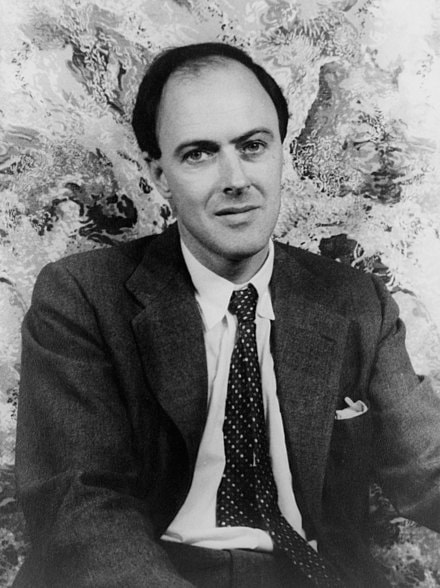
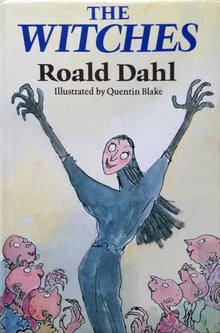
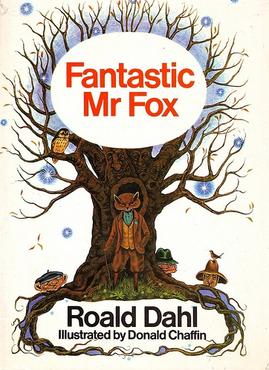
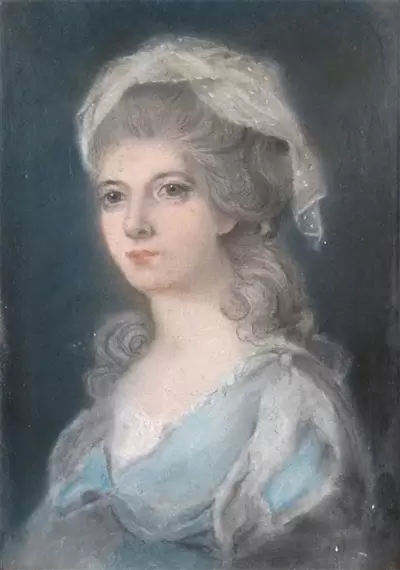
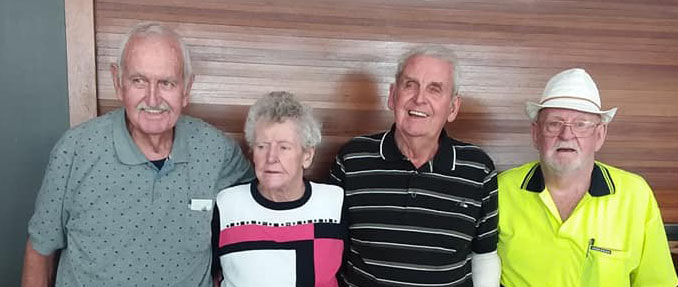
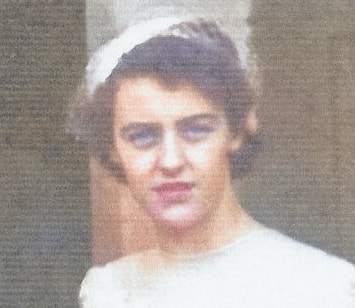
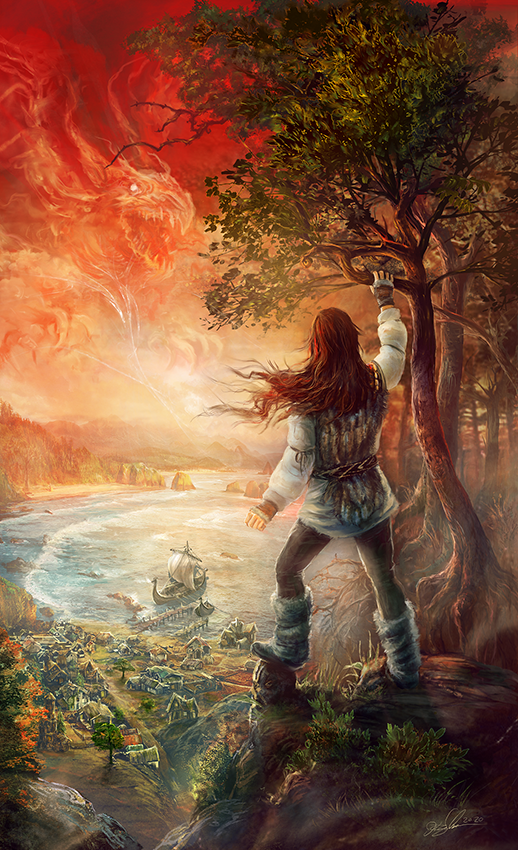
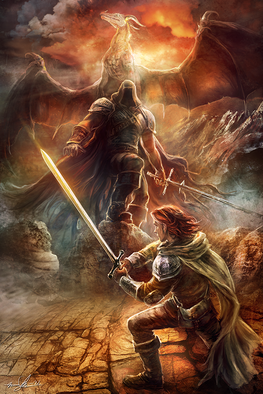
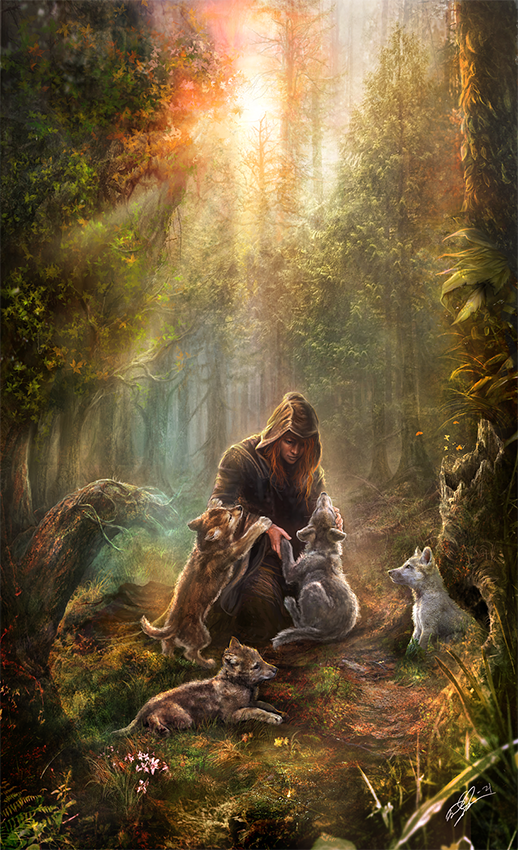




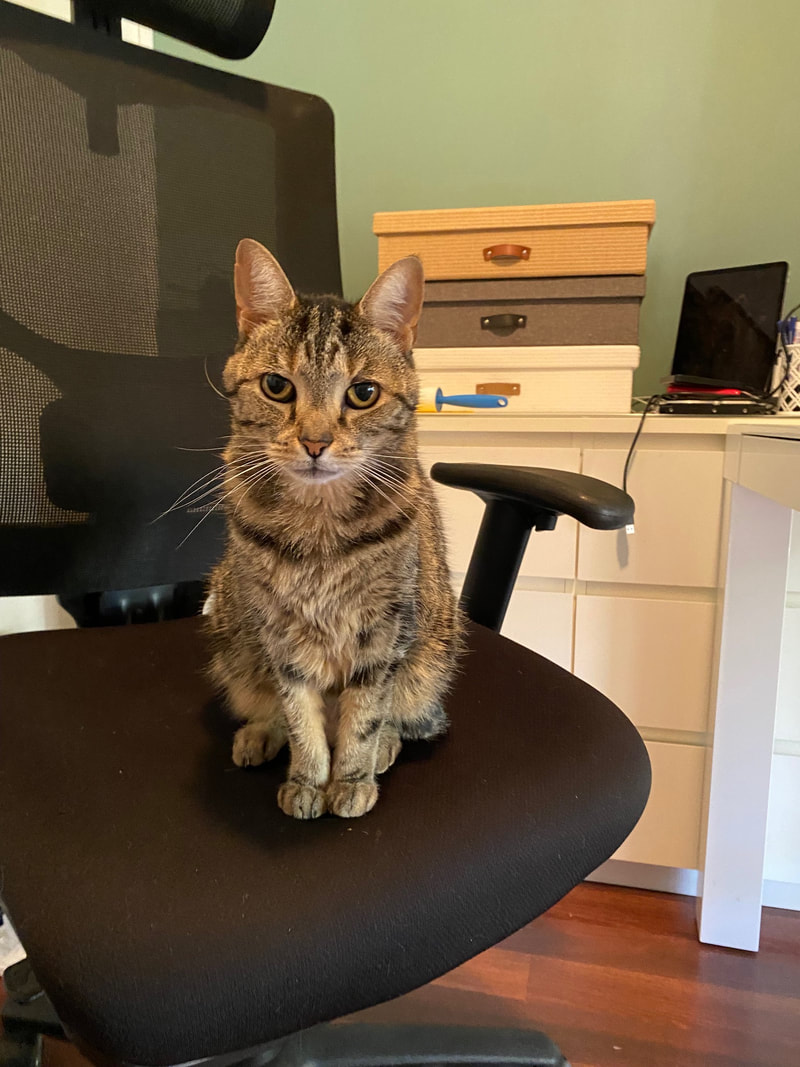
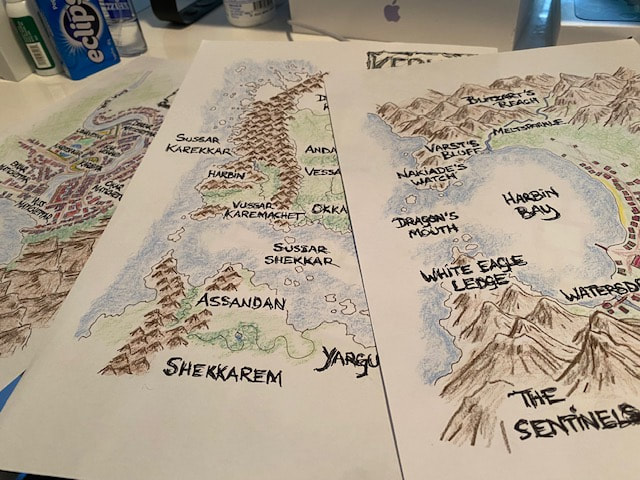
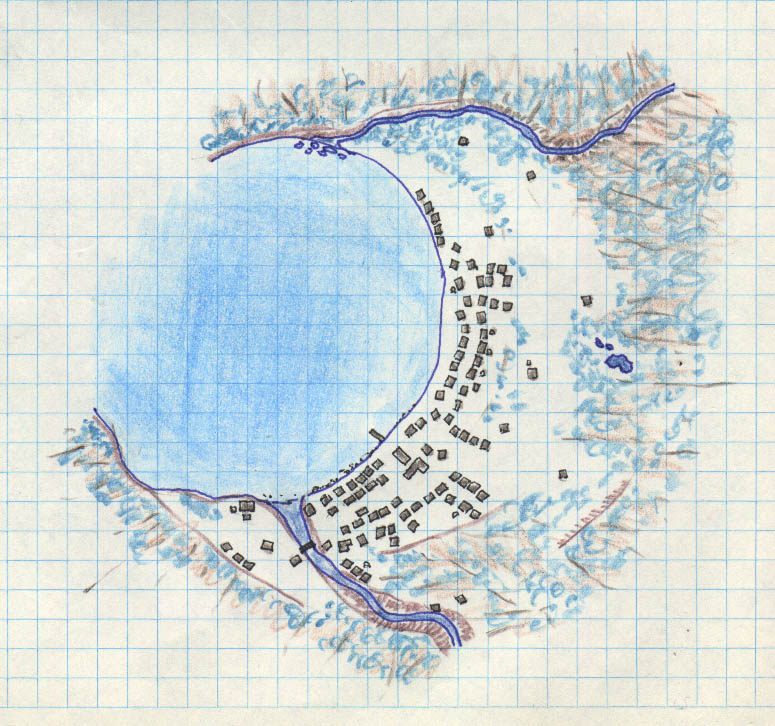
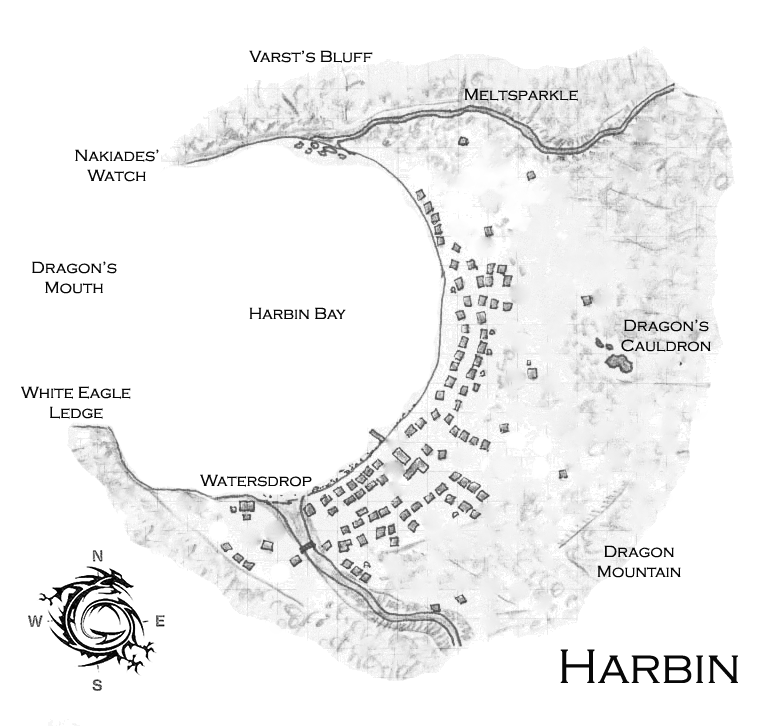
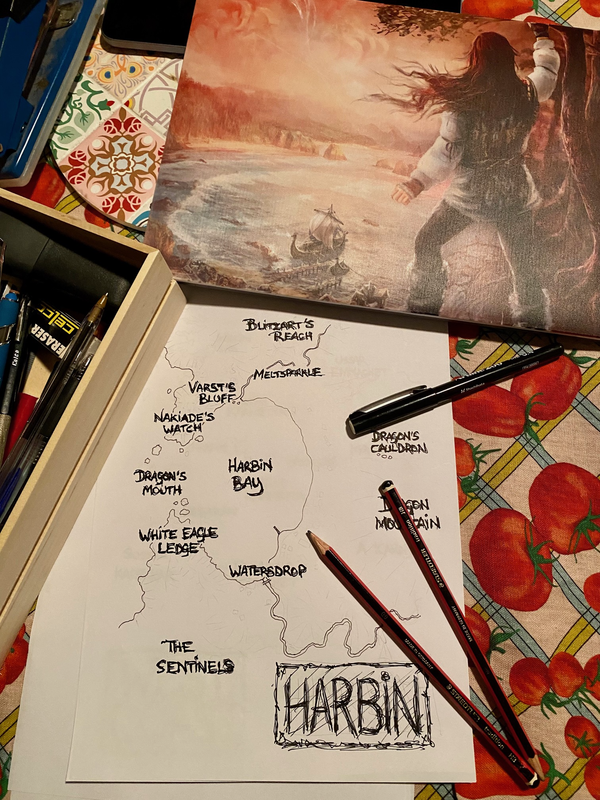
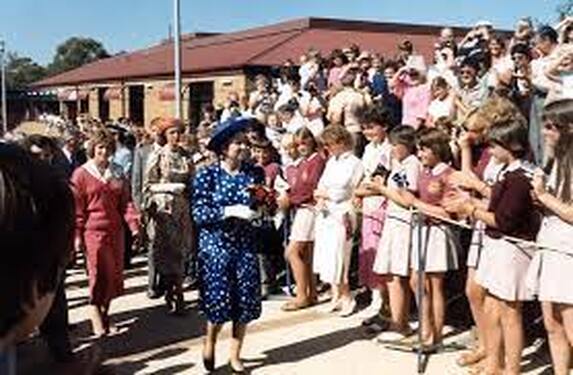
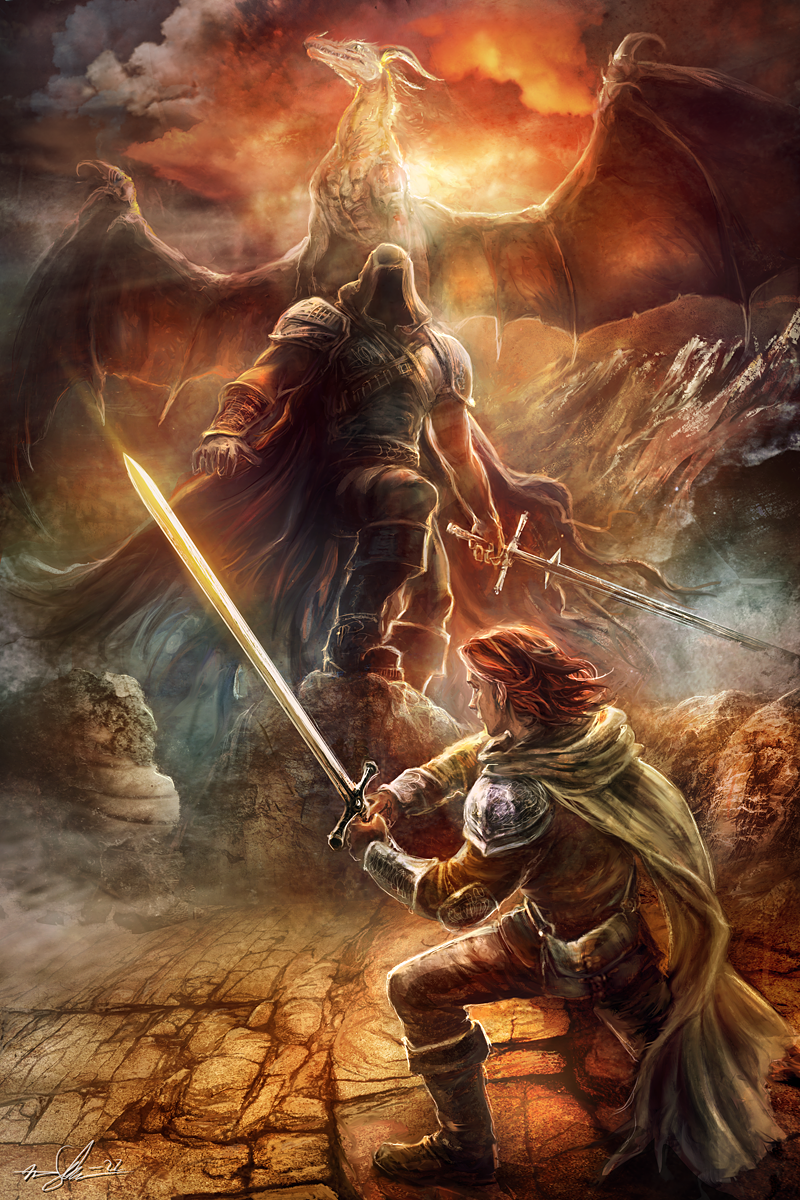

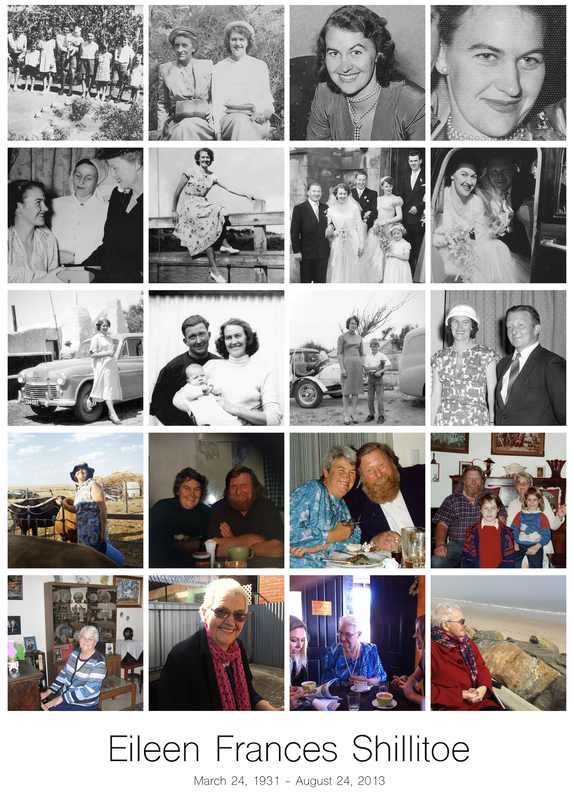
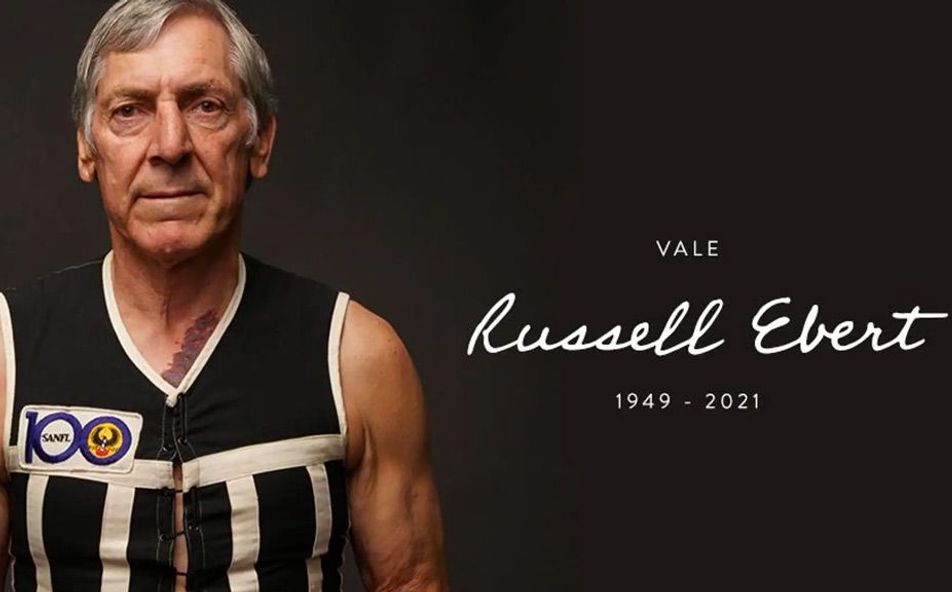
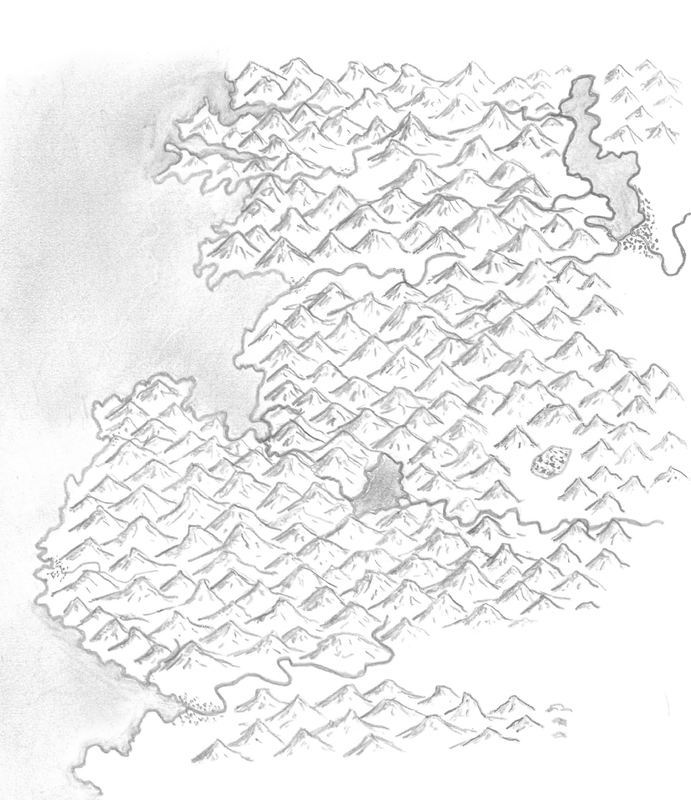

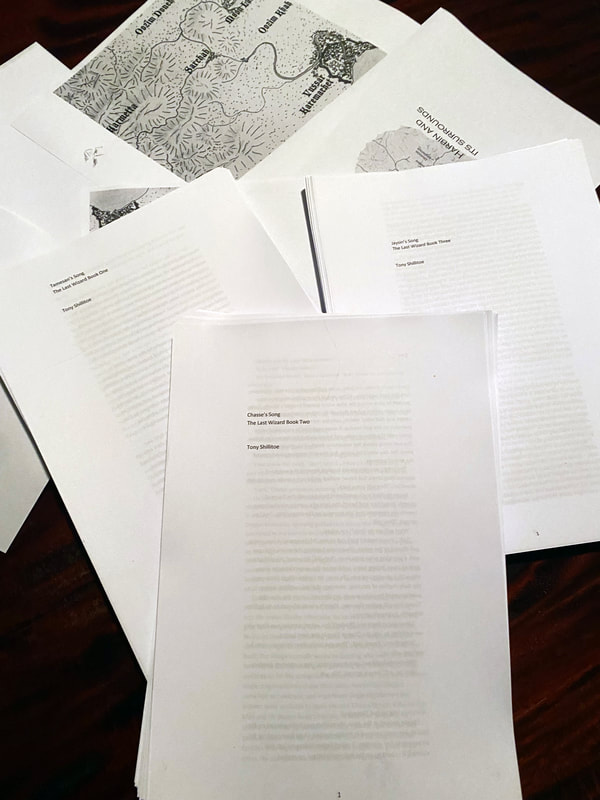
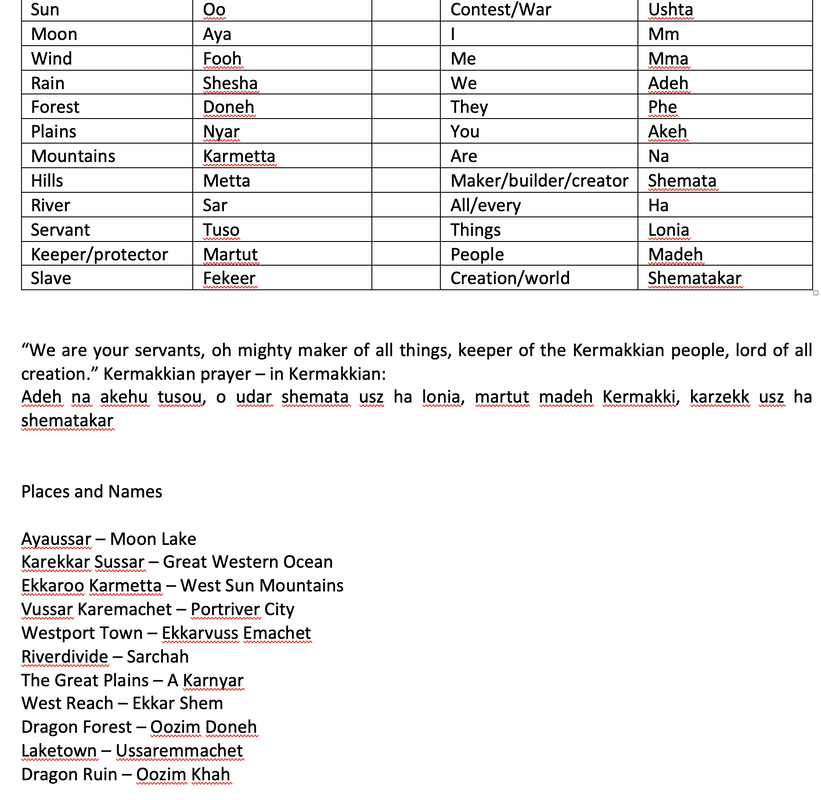
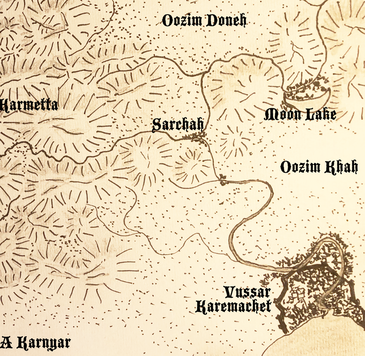
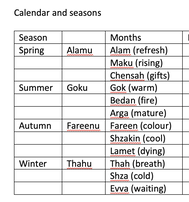
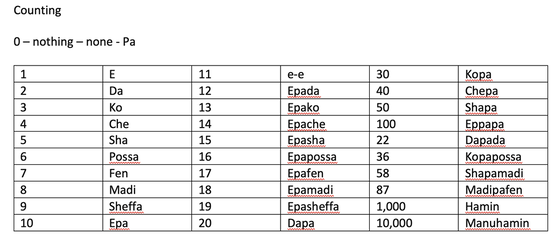
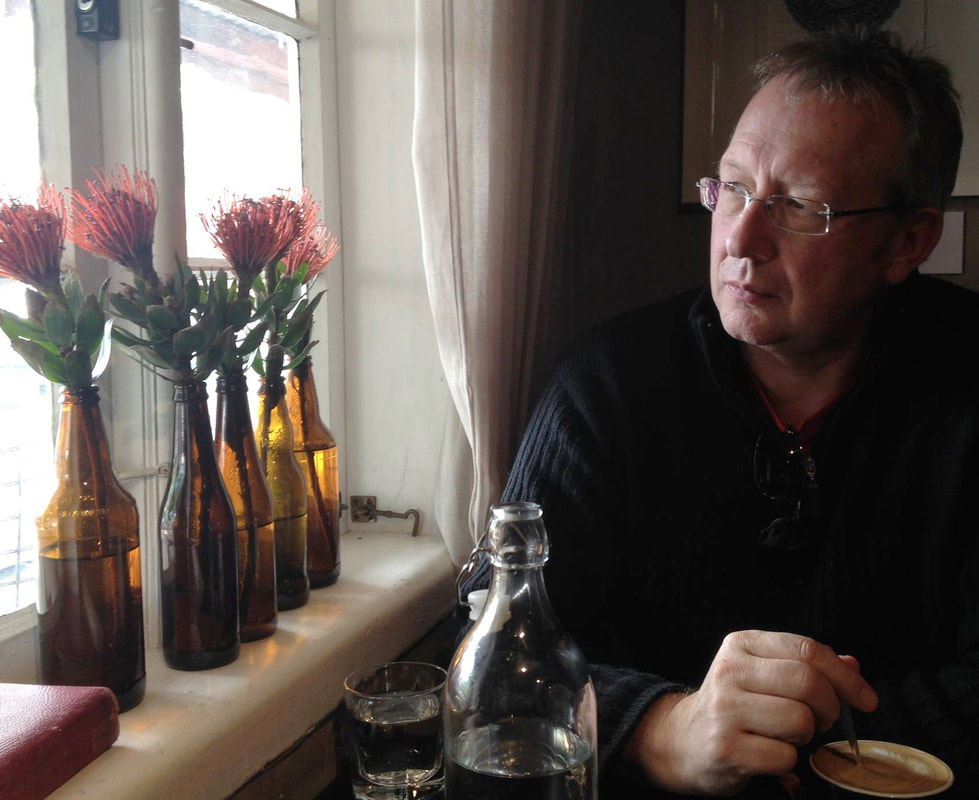
 RSS Feed
RSS Feed